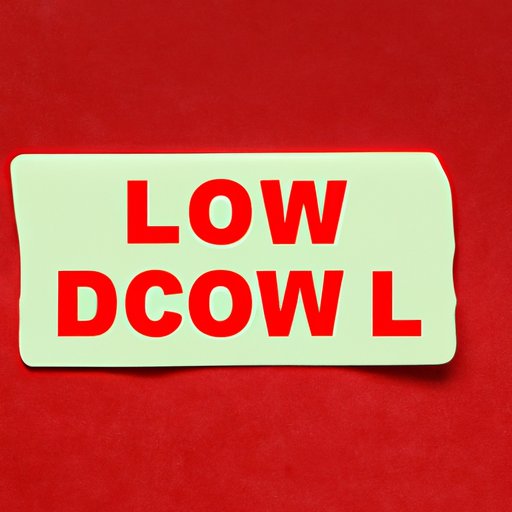
Introduction
Are you looking for a way to alleviate digestive discomfort or recover from a gastrointestinal disorder? A low residue diet might be the solution you need. In this article, we will demystify the low residue diet by exploring what it is, what health conditions it may help with, what foods you can eat, and how to follow it while eating out.
What is a Low Residue Diet and Why Might You Need to Follow One
Low residue diet is a way of eating that limits the number of foods that leave undigested material in the digestive tract. This approach can help soothe digestive discomfort and decrease inflammation in individuals with certain gastrointestinal disorders. Common reasons to follow a low residue diet may include Crohn’s disease, ulcerative colitis, and bowel obstruction. If you are looking to follow a low residue diet, it is important to create a balanced meal plan that includes all the necessary nutrients.
Top 10 Foods for a Low Residue Diet
If you are exploring a low residue diet, you may be wondering what foods are safe to eat. You will be happy to know that many healthy, flavorful, and nutritious foods fall into this category. Ten great foods that are low in residue include white bread, white rice, boiled potatoes, canned fruit, fish, yogurt, tofu, smooth nut butter, eggs, and low-fiber cereal. These foods are not only easy to digest but also high in protein, vitamins, and other essential nutrients.
Meal Prep Ideas for a Low Residue Diet
One of the biggest challenges you may face while following a low residue diet is meal preparation. On the bright side, there are many creative and delicious options available to you. For instance, you can prepare a sandwich with white bread, low-fiber deli meat, and avocado. Or you may opt for a plate of baked white fish, boiled potatoes, and canned fruit as a main course. If you are a fan of smoothies, you can blend yogurt, low-fiber fruits, and peanut butter for a nutritious snack. To make the most of your meal prep time, consider cooking large batches of meals and storing them in the fridge or freezer.
The Pros and Cons of a Low Residue Diet
Like any dietary change, there are pros and cons to adopting a low residue diet. On the positive side, this type of eating may help decrease inflammation, reduce diarrhea, and alleviate abdominal pain or bloating. On the downside, it may cause nutrient deficiencies, constipation, or unwanted weight loss. The key to decision-making is to weigh the potential benefits and drawbacks and consult your doctor or a registered dietitian before starting a low residue diet.
How to Stick to Your Low Residue Diet While Eating Out
Following a low residue diet doesn’t have to put a damper on your social life or travel plans. There are plenty of ways to dine out or eat on the go while sticking to your dietary restrictions. Some tips include checking menus online before heading to a restaurant, choosing grilled or roasted foods over fried or spicy ones, and bringing your own snacks or small meals to nibble on. Don’t shy away from communicating with your server or chef about your dietary needs, either. They will likely be happy to accommodate you with customized menu options or simple substitutions.
Conclusion
Switching to a low residue diet can be a challenge, but it can also be a life-changing choice for individuals with certain gastrointestinal disorders. Remember, the key to success is to create a balanced meal plan, experiment with new foods and flavors, and communicate with your healthcare team. With a little creativity and dedication, you can enjoy nutritious and delicious meals while promoting gut health.





